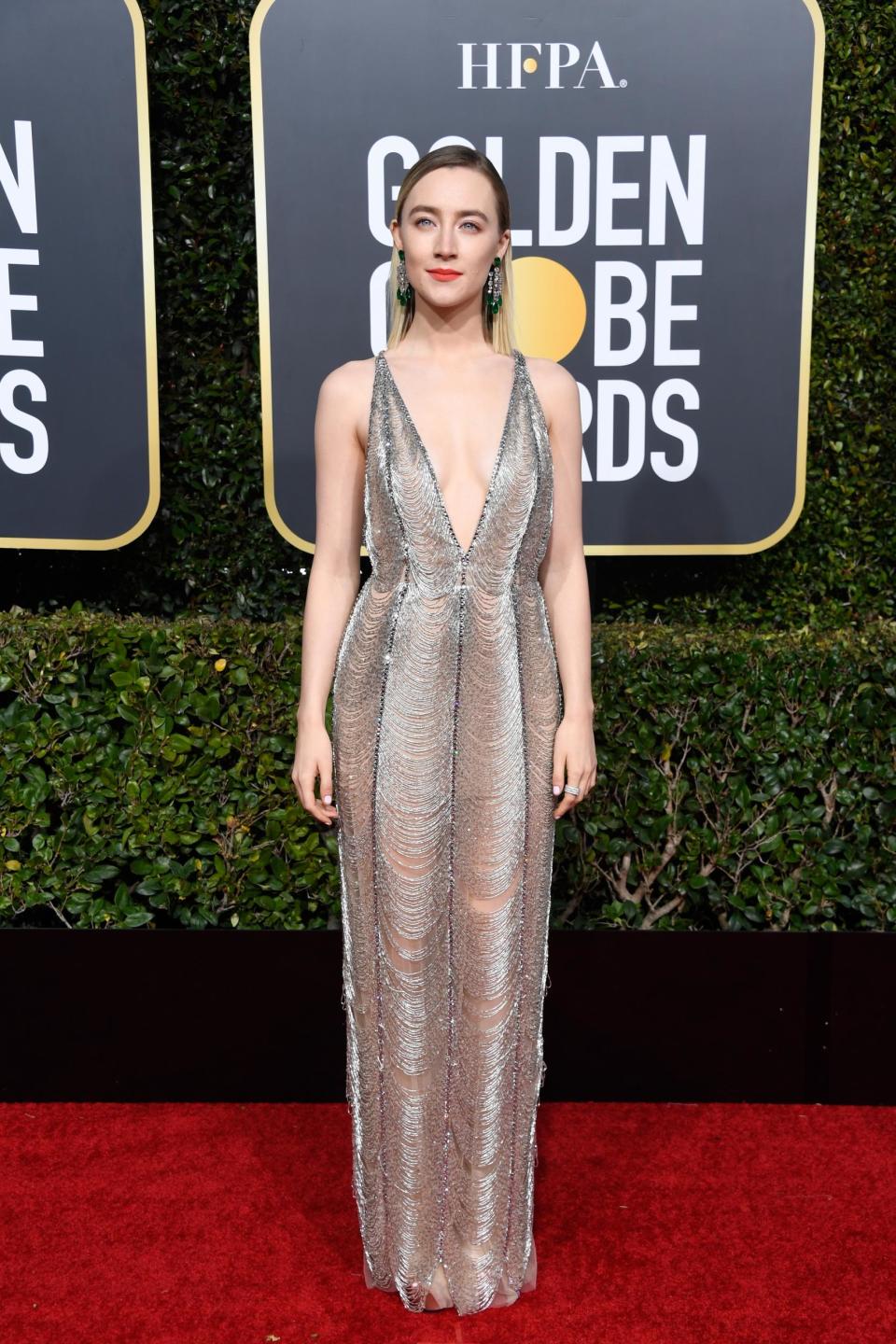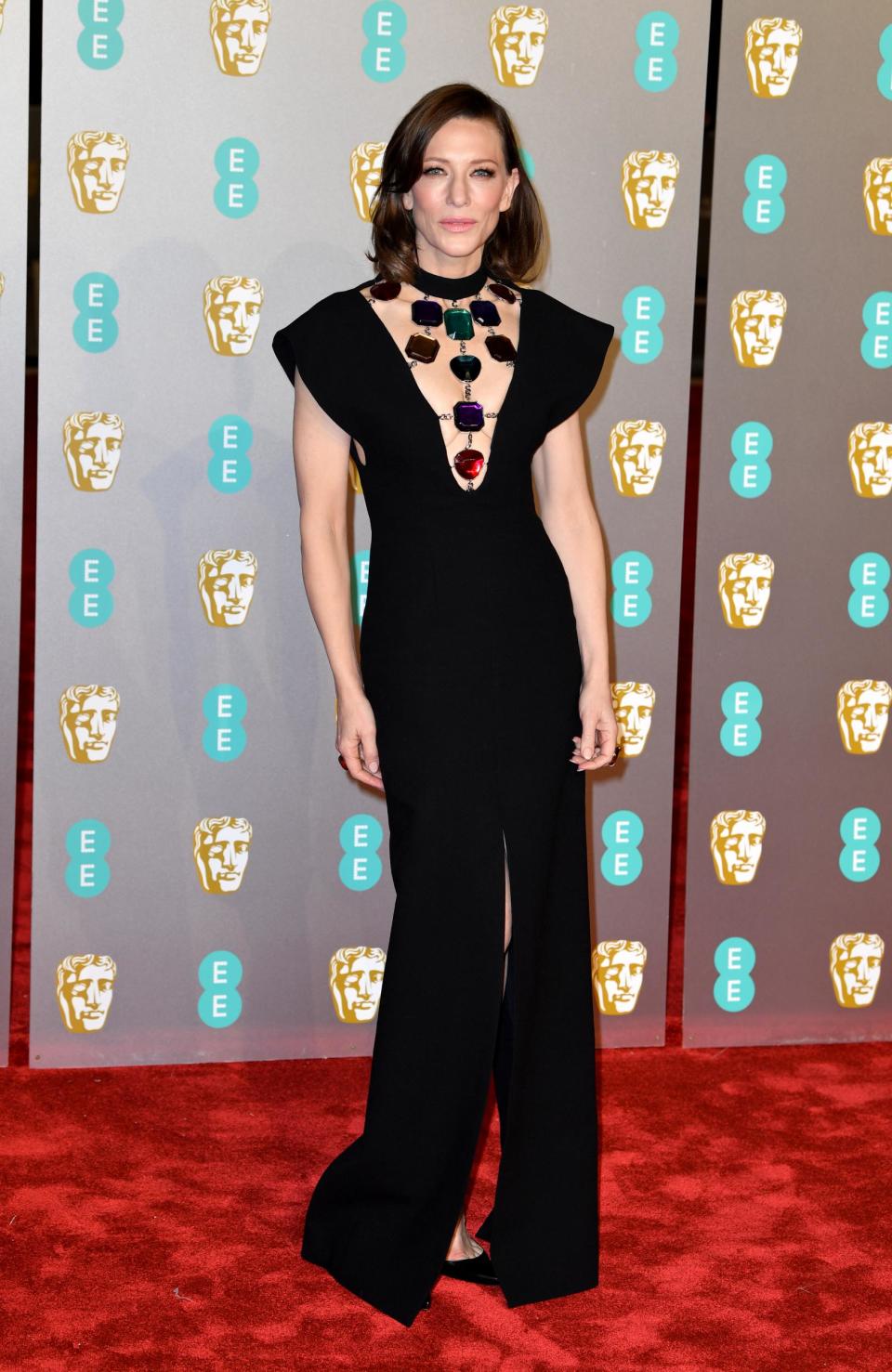How Brooke Wall become the super-agent of Hollywood
Time was, an actress nominated for an Academy Award would buy an evening dress for the occasion, like a regular civilian. Let’s be honest, though, sometimes the results weren’t always pretty: in 1988 Cher wore a sheer black diamanté bra-top and beefeater hair more worthy of a Halloween party than the Oscars; in 1989 Demi Moore turned up in a corset and bike shorts, and in 2001 Björk went as a swan.
These days, however, an A-list actress would never dream of dashing around Barneys/Selfridges herself or ordering a skipful of options from Net-A-Porter. The ensembles you’ll see on Sunday, when the stars assemble in Los Angeles for the 91st Academy Awards, are now entirely the creations of super-agents, working behind the scenes for up to six months to perfect that red-carpet moment.
Many of the biggest names in styling are represented by the Wall Group, an über-agency which employs 300 stylists, hair and make-up artists across four offices in three countries, and whose client roster is a roll call of Hollywood’s leading ladies. Leslie Fremar dresses stars including Charlize Theron and Julianne Moore. Kate Young dresses Michelle Williams and Margot Robbie. Elizabeth Saltzman works with Saoirse Ronan, Sandra Oh and Gwyneth Paltrow. Rebecca Corbin-Murray dresses Lily James, while Ilaria Urbinati works with Best Actor Oscar Winner Rami Malek, Bradley Cooper, John Krasinski and Donald Glover among others.
It is the day after the Baftas and the Grammys when I meet Brooke Wall, the 54-year-old founder of the Wall Group, at her sleek, elegant offices in West Hollywood. While, clearly, she understands the business of fashion inside out, she is far from a slave to it, dressed today in trainers, jeans and an oversized gold cardigan. “I am not into being uncomfortable in outfits that are just fashion statements,” she shrugs. “That’s really not my personality — I am much more about rolling up my sleeves.

“I fly-fish, and wear nothing but Patagonia in my free time — I love a puffer,” she admits. She is, after all, Canadian.
Born and raised in Vancouver, Wall moved to London aged 17 and studied hairdressing at the Vidal Sassoon Academy before heading to New York in the early Nineties. There, she began working with Oribe, hairdresser to the supermodels Christy Turlington, Linda Evangelista and Naomi Campbell.
She then worked at the Ford modelling agency, where she started a hair, make-up and styling division, before setting up on her own, launching the Wall Group in New York in 2000. For the first few years the artists on her books were mainly working for editorial shoots and fashion shows. Then, one day, she found herself at a lunch in LA beside Michelle Pfeiffer.
“She said to me, ‘What should I wear to the Oscars?’” recalls Wall. “I thought, holy sh*t, there is a real need in Los Angeles for stylists who really know what is going on in fashion.” She launched the LA outpost a year later, followed by London in 2016 and, a year ago, a Paris office. Over the past 14 years the red carpet has, of course, grown from a pre-event sideshow into a high-profile spectacle to rival the main event. Dissected for days afterwards, a successful red-carpet splash now represents valuable column inches for a celebrity, and a showcase money cannot buy for big brands and fashion houses.

Consequently, the stylists who ensure they look a million dollars when they step in front of the phalanx of photographers have become almost as powerful as the stars whose images they create and curate. “Stylists were like the ladies-in-waiting,” says Wall. “And now they are on the throne.”
Social media has boosted the public profile of the stylist, pulling back the curtain to reveal the effort and elbow grease that goes into a red-carpet look. “People now understand that the hottest pop star or actress doesn’t necessarily have this amazing style innately,” says Wall. Stylists are also the ones with strong relationships with fashion houses, and so can broker very lucrative label deals for their actress clients, such as Natalie Portman becoming the face of Dior and Cate Blanchett promoting Armani.
Other stars and their stylists use fashion to craft a particular narrative, such as Lady Gaga casting herself in the role of old-school Hollywood icon — in white floor-length Dior couture for the SAG awards, and a powder-blue Valentino gown for the Golden Globes — as she vies for an Oscar alongside Glenn Close and Melissa McCarthy. “They are storytellers — they tell stories with clothes,” says Wall. And as the all-black outfits at the 2018 Golden Globes, in support of #TimesUp proved, fashion’s role in the politics of Hollywood has never been more powerful.
The preparations for an Oscars look can begin as early as the previous August, when the buzz about films and performances begins in earnest at the Venice Film Festival. “Then we start getting calls from publicists in October to hold time and looks for the Oscars — it’s a bit like a wedding,” says Wall. “But it’s never, ever just one award.”
It’s not even just the “big four” — the Golden Globes, the Screen Actors Guild awards, the Baftas and the Oscars — the “campaign trail” is now practically a full-time job, involving festivals in Toronto, Berlin and London, plus myriad awards ceremonies, public appearances, interviews and lunches. “An actress’s schedule for awards season is so hectic that the idea of dressing herself isn’t realistic.”
How many options a stylist prepares for each event depends entirely on their particular MO: anything from three outfits to four racks is the norm, according to Wall. Elizabeth Saltzman told me recently that when she dressed Gwyneth Paltrow in the now-iconic white Tom Ford cape for the 2012 Oscars, she had no back-up. “I didn’t sleep the night before,” she admits. “I was awake all night, worrying what if someone drops lipstick on it or throws a cup of tea down it when she’s getting ready?” At what stage an actress finally decides on a look can also be the stuff of nightmares, says Wall. “It’s been known that the actress will wake up on the day of the awards and want to change their outfit’.”
Wall is far too diplomatic to name her favourite looks of the recent past but will cite Cate Blanchett (styled by Elizabeth Stewart) as the most consistent red-carpet dresser. And from the past, her red-carpet favourites include Katharine Hepburn, Lauren Bacall and, of course, Grace Kelly.
When Hepburn and Kelly walked the red carpet, trends moved from east to west, says Wall, starting with the royal families and runways of Europe and leaching into Hollywood. Now, thanks to the rapid dissemination of images via social media, fashion influences sometimes flow in the other direction. “The way trends move has shifted from west to east on some occasions,” says Wall. “And there is a much stronger awareness of the red carpet and the power of it in the UK and across Europe.” Indeed, the red carpet now seems to be the perfect preparation for joining the House of Windsor.
The downside of the explosion in red-carpet styling is, of course, the accompanying scrutiny — nobody wants their client being trashed at the top of the worst-dressed list the next day. “But if they’re the best-dressed, that’s incredibly gratifying,” says Wall. “Far more so than any amount of money.”

 Yahoo News
Yahoo News 
